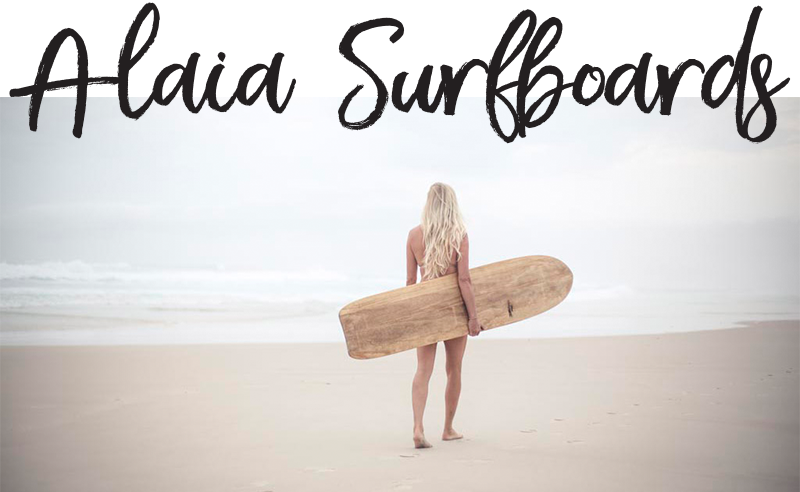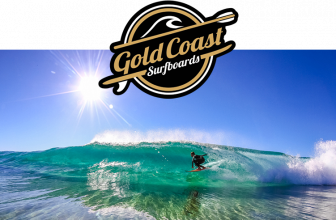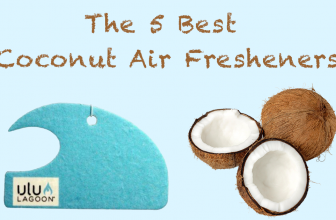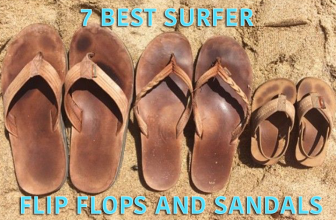
We saw the resurgence of the alaia surfboard in the early 2000s, and those of us seeking to push our surfing limits have been raring to get our hands on one.
More...
On the outside, it looks like any ordinary plank of wood. In the water, it becomes a godsend, or an instrument used only by royalty.
After all, the alaia surfboard was the glider of choice by the ancient Hawaiians, long before the invention of surfboard fins.
What is an alaia surfboard?

An alaia surfboard is a finless wooden surfboard that was first used by the ancient Hawaiians before the advent of the 20th Century.
Think 1800s. Alaias can vary in size, but they are usually made between five feet to ten feet in length.
Alaias are thin boards and they never go over two inches in thickness.
An alaia has hard rails, which allows it to bite into the wave even without fins.
An alaia is also lightweight, which allows it to accelerate quickly as you go down the face of a wave.
It is debatable whether or not an alaia surfboard should have a rocker; however, the notable thing about alaias is that it has enough flex to allow its rider to surf the board as if it had a rocker.
Alaia Surfboard Dimensions
Unlike most modern board types, traditional Alaia dimensions can have significant variations in size from one board to the next. You’ll typically find that they range from 5’-10’ in length, and 15”-19” in width. As a general rule of thumb, carvers make them fairly thin with a thickness that ranges from ½”-2”.
It may seem outlandish to try riding something that sounds so complicated, but the truth is, surfers who have tried surfing alaia surfboards can’t stop smiling when they talk about riding these wooden planks.
If you are looking for a purer way of surfing, or if you want to reconnect with a piece of surfing history, make sure to try surfing an alaia surfboard at least once in your surfing life.
Best Done-For-You Alaia Surfboards
Alaia surfboards would have been delegated as museum pieces or collectibles had it not been for Tom Wegener who reintroduced their riding potential in 2004. Tom was already a renowned shaper in the early 2000s but he couldn’t stop experimenting with wooden boards.
In 2004, Tom visited the Bishop Museum in Hawaii, and when he saw the ancient alaia surfboards on display, he knew he found his calling. Today, Wegener Surfboards offer a wide range of alaia surfboard models:
Check out These surfboards!
Click the link below to shop for these surfboards on Amazon.com!
Surfie
The surfie is 4 feet long and 14 ½ inches wide and 7/16th of an inch thick.
It is mainly used like a bodyboard in small to medium waves, but it offers an amazing amount of flex that will redefine your surfing experience.

Finley Model Alaia
The Finley model carries the distinct tombstone shape of ancient Hawaiian alaia surfboards.
They can go from 4 feet to 9 feet long, and are only 6mm in thickness.
It's long straight and squared off rail makes it the fastest of all the alaia surfboard models.

Peanut Model Alaia
This is an alaia built for more advanced riders.
This board is said to be so loose that it will only follow your stream of consciousness.
If your mind is not clear, you won’t be able to ride this board.

Stuth Model Alaia
The Stuth alaia is the easiest board to stand up on because its parabolic rails provide stability while going down the face of a wave.
Flex is provided in the tail portion, which will make turning and trimming an entirely new experience.

How To Make An Alaia Surfboard
If you know how to pick your alaia surfboard wood and materials, and if you are anywhere near decent with working with your hands, you can try shaping your own alaia surfboard at home. The most basic alaia surfboard template should only cost you $30. Imagine the stoke out of riding a new board for the price of a meal!
1) Do your research.
Do your homework and learn as much as possible about alaia surfboard wood and alaia surfboard templates. There are videos available online that will show you exactly how an alaia surfboard blank is to be treated and shaped.
2) Know your materials and tools.
A big part of doing research is getting familiar with the tools and materials to be used. To start, you are going to need the following:
- an alaia surfboard blank or Paulownia wooden planks
- a jigsaw
- two sawhorses
- a hand plane
- an electric sander
- waterproof glue
- wood clamps
- linseed oil
- a face mask
- newspapers to keep your work area clean
Paulownia or Polonia wood is the alaia surfboard wood of choice because it is light and it won’t take in water. This eliminates the problem of delamination or water logging into your board.
3) Start shaping your alaia surfboard.
- Set 5 to 6 planks of Paulownia wood on top of two sawhorses and make sure all the pieces of wood are aligned.
- Apply waterproof glue to stick all the planks of wood together. Now flip the entire board really quick and clamp them together, while maintaining perfect alignment.
- The nose and tail need to be clamped tightly, while the rest of the body can be pulled it together with smaller clamps. Let the glue dry overnight.
- Once you have your alaia surfboard blank ready, draw your alaia outline. Some blanks already come with an alaia surfboard template that you will just have to cut away.
- Cut along the sides of your outline and remove any excess wood with sandpaper. Be careful not to cut too much because you won’t be able to put back more wood into your alaia surfboard template.
- Use your hand plane or an electric planer to shape your board. As a guide, maintaining half an inch of width in the center of the board is ideal while gradually moving to a quarter inch along the rails.
- Once done, it’s time to sand your board.
- Add 3-4 coats of boiled linseed oil to your alaia surfboard to cure and preserve the wood. Let dry.
4) Ride your alaia surfboard.
Once your linseed oil coating dries completely, go ahead and test your very first alaia surfboard! Waist high waves provide the perfect conditions to start practicing on your alaia.
FAQ
Is there a difference between cheap and expensive alaia boards?
There is a difference in the type of materials used and in the craftsmanship involved in shaping the alaia. A cheap alaia could break easier than one that is made with quality materials. However, this doesn’t mean that you need to shell out a huge amount of money to enjoy riding alaias. You can simply build your own alaia surfboard for as little as $30.
How hard is it to surf on an alaia surfboard?
The absence of a fin to keep you locked in the wave will make it more difficult to stand up on an alaia. However, you can also choose to belly-ride alaia surfboards and they will go faster than a bodyboard. Because of the thinness of the wood, you’ll be so close to the water. You won’t get that feeling from riding regular bodyboards or surfboards.
Alaia vs. Regular surfboard?
It depends on your personal riding style. Both forms are equally good in their own right. The important thing is keeping an open mind so you can learn something from both crafts.
Is there anything special to riding an Alaia?
Aside from being a purer form of surfing because it’s what the ancient Hawaiians used to ride, alaia surfboards have lesser environmental impact because of the materials used to create it.
Do you wax an Alaia?
It really depends on your preference. Some choose to wax their alaia surfboards because friction with wood causes nasty rashes and that coat of linseed oil will be extra slippery when wet. However, there are some surfers who consider their alaias to be works of art, so if they decide to reshape their board along the way, having a ton of wax on the deck will have an impact on the work in progress. Some surfers are determined to ride alaias exactly the way history dictated: sans wax.
Is there a special way to wax an Alaia?
If you decide to put wax on your alaia, you can wax it like any regular surfboard.
Do you wear a leash with an Alaia?
Again, this is something that is up to your preference. Most alaia surfboards don’t come with leash plugs because it is believed that these boards have to be ridden exactly the way our ancestors did. If you don’t have the ability to swim after your board, maybe you shouldn’t be riding an alaia just yet.
What kind of waves do you ride with an Alaia?
Small to medium waves work best with alaias, however some really good surfers like Dave Rastovich have surfed overhead waves on a 16-foot alaia.
How do you take care of an Alaia?
Just like a regular surfboard, rinse your alaia with freshwater after every session and keep it away from direct sunlight and moisture.
How long does an Alaia last?
If you take care of your alaia well enough, it should last you a lifetime.
Can you break / snap an Alaia?
Unfortunately, there is no ancient magic that prevents alaias from breaking. Some of these mishaps occur because of shaping errors like bad construction or using non-waterproof glue. Some alaias just snap from being at the wrong place at the wrong time.
Wood is a heavier material than foam or epoxy. Are Alaias heavy?
On the contrary, alaias are lightweight due to their thin nature. Most alaia boards don’t even get a full inch of thickness. These boards need to be thin because flex is a huge part of surfing alaia boards.
Conclusion: Is the Alaia Surfboard Right For Me?
You don’t have to be a professional surfer to be able to ride an alaia. However, you are going to need more than just the fundamentals of wave reading and wave catching to be able to grasp the concept of surfing with a finless wooden board.
Most of the surfers who are drawn to the alaia surfboard are those looking for a deeper soul connection with the ancient art of riding waves. In an interview with Surfing magazine, Dave Rastovich calls it a “sublime obligation” to try as many different kinds of surfboards as possible.
This was not only going to help you progress in your surfing, it was also going to open a new world of possibilities that you wouldn’t discover otherwise.
When riding an alaia surfboard, the wave teaches you something that you would probably miss on a regular surfboard. So if you are the free-spirited surfer looking to tune in with the ocean, riding an alaia surfboard should be in your bucket list.




